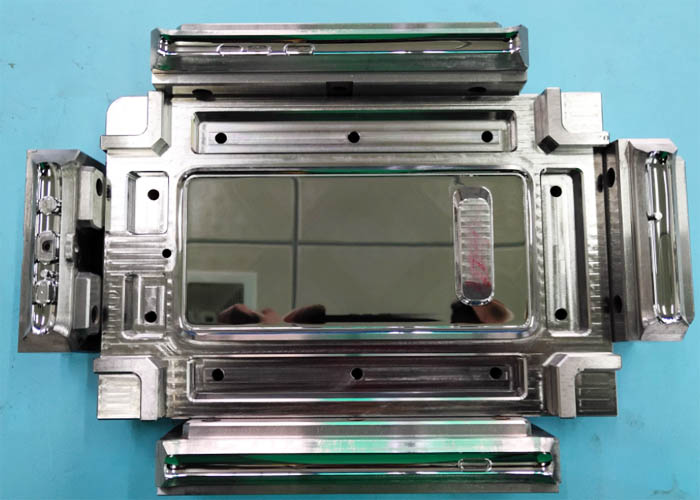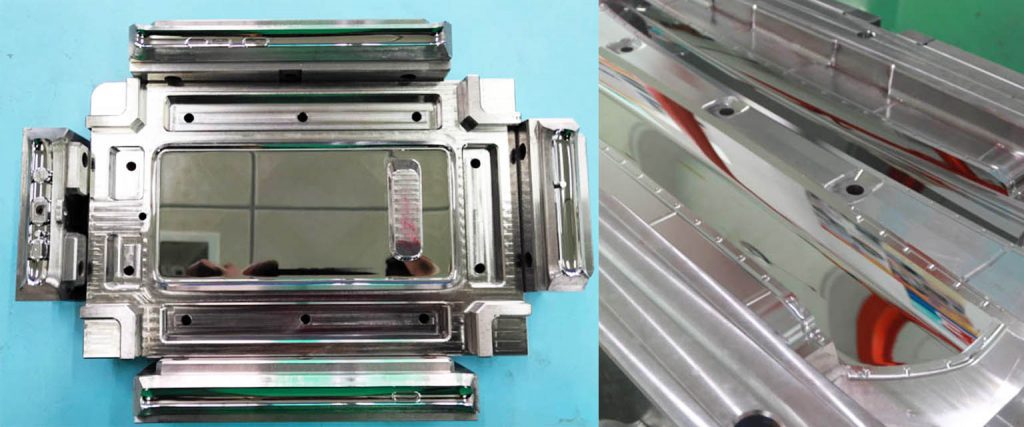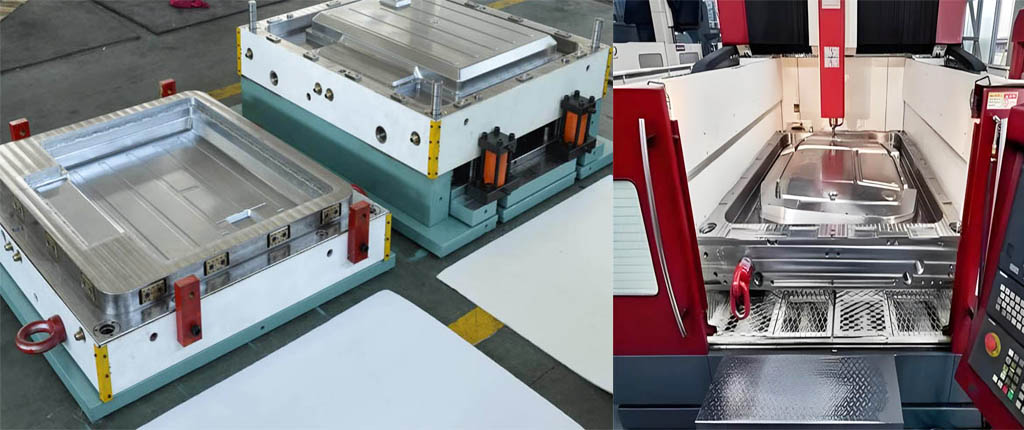The surface polishing of the mold plays a vital role in the quality of the mold. The following editor introduces the 6 methods of injection mold and compression mold polishing as follows:
Table of Contents
ToggleMechanical polishing injection mold and compression mold
Mechanical polishing is a polishing method that removes the polished convex parts by cutting and plastic deformation of the surface of the material to obtain a smooth surface. Generally, whetstone strips, wool wheels, sandpaper, etc. are used. Using auxiliary tools such as a turntable, the surface quality
For those with high requirements, the ultra-fine grinding and polishing method can be used. Ultra-precision grinding and polishing is a special abrasive tool, which is pressed on the surface of the workpiece to be machined in the grinding and polishing liquid containing abrasive, and rotates at high speed. Using this technology, it can be achieved Ra0.008μm surface roughness, which is the highest among various polishing methods.


6 methods of mold polishing
Chemical polishing injection mold and compression mold
Chemical polishing is to allow the microscopically protruding parts of the material to dissolve preferentially over the concave parts in the chemical medium, thereby obtaining a smooth surface. The main advantage of this method is doesn’t need complex equipment, but it can polish part for complex shapes, and can polish many part simultaneously with high efficiency. The preparation of polishing liquid is core problem of chemical polishing. The surface roughness results is only several 10 μm after chemical polishing treatment.
Electropolishing injection mold and compression mold
The basic principle of electrolytic polishing is the same as that of chemical polishing, that is, it selectively dissolves the tiny protrusions on the surface of the material to make the surface smooth. Compared with chemical polishing, the influence of cathode reaction can be eliminated, and the effect is better. There has two steps to do electrochemical polishing process as follows:
(1) Macroscopic leveling, dissolved products diffuse into the electrolyte, material surface’s geometrical roughness will decreases, Ra>1μm.
(2) Low light leveling Anodic polarization, improved surface brightness, Ra<1μm.
Ultrasonic polishing injection mold and compression mold
The workpiece is placed in the abrasive suspension and placed in the ultrasonic field together, and the abrasive is ground and polished on the surface of the workpiece according to the oscillating action of the ultrasonic wave. The macroscopic force of ultrasonic processing is small, and it will not cause deformation of the workpiece, but it is difficult to make and install the toolingUltrasonic machining polish is also can be combined with chemical polish or electrochemical methods polish. On the basis of solution corrosion and electrolysis, ultrasonic vibration is applied to stir the solution, so that the dissolved products on the surface of the workpiece are detached, and the corrosion or electrolyte near the surface is uniform; the cavitation of ultrasonic waves in the liquid can also inhibit the corrosion process, which is conducive to surface brightening
Fluid polishing injection mold and compression mold
Fluid polishing is to scour the surface of the workpiece according to the high-speed flowing liquid and the abrasive particles it carries to achieve the purpose of polishing. Commonly used methods are: abrasive jet machining, liquid jet machining, hydrodynamic grinding, etc. Hydrodynamic grinding is driven by hydraulic pressure, so that the liquid medium carrying abrasive particles flows reciprocatingly across the surface of the workpiece at high speed. The medium is mainly made of special compounds (polymer-like substances) with good flowability under lower pressure and mixed with abrasives, and the abrasives can be silicon carbide powder.
Magnetic grinding and polishing
Magnetic grinding and polishing is to use magnetic abrasives to form abrasive brushes under the action of a magnetic field to grind workpieces. This method has high processing efficiency and nice quality,processing conditions is easy to control and good working conditions.. If use a suitable abrasives, the roughness of surface can reach Ra0.1μm.
Plastic injection and compression mold polish processing has a big different from the surface polishing required of other industries product. Strictly speaking, the polishing of injection mold and compression mold should be called mirror processing. It has high requirements not only for polishing itself but also for surface flatness, smoothness and geometric accuracy. Surface polishing is generally only need to obtain a bright surface will be OK. The standard of mirror processing is divided into four grades: AO=Ra0.008μm, A1=Ra0.016μm, A3=Ra0.032μm, A4=Ra0.063μm, it is difficult to precisely control the geometric accuracy of parts due to electrolytic polishing, fluid polishing and other methods However, the surface quality of chemical polishing, ultrasonic polishing, magnetic polishing and other methods cannot meet the requirements, so the mirror surface processing of precision molds is still dominated by mechanical polishing.


